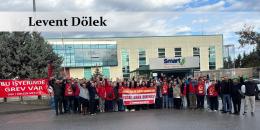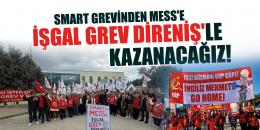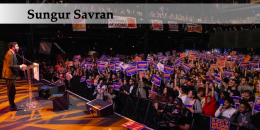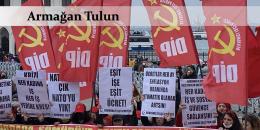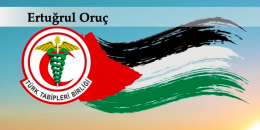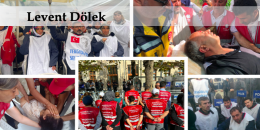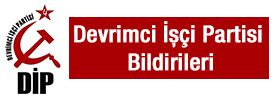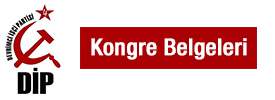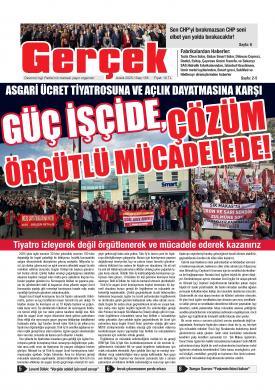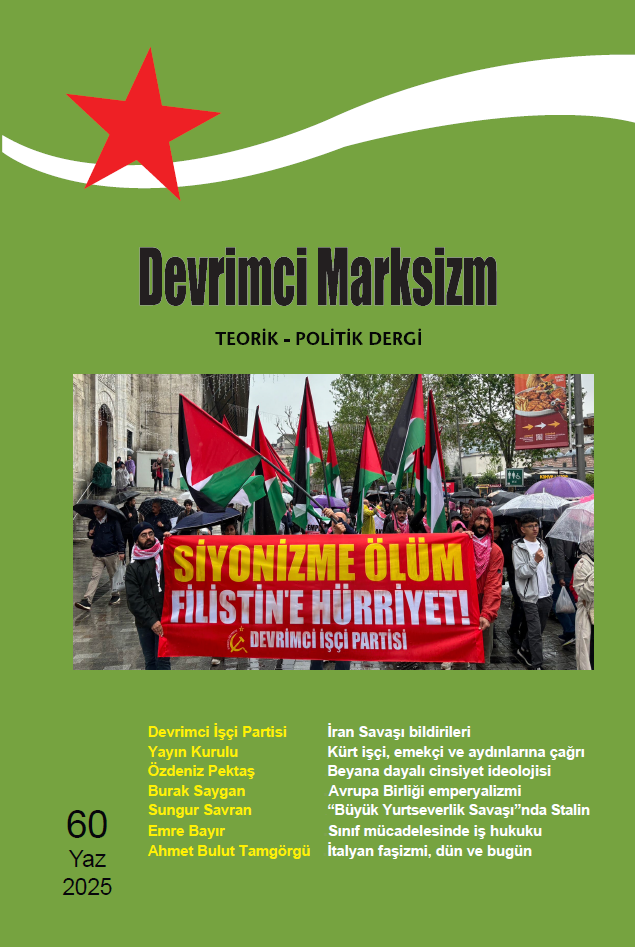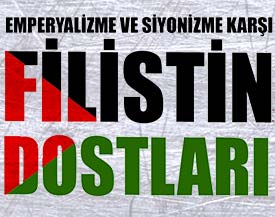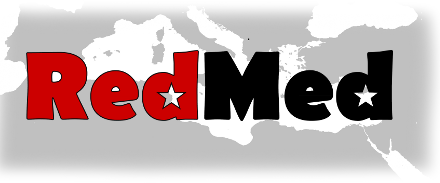Burn all the banks, Iranian brothers and sisters, until...
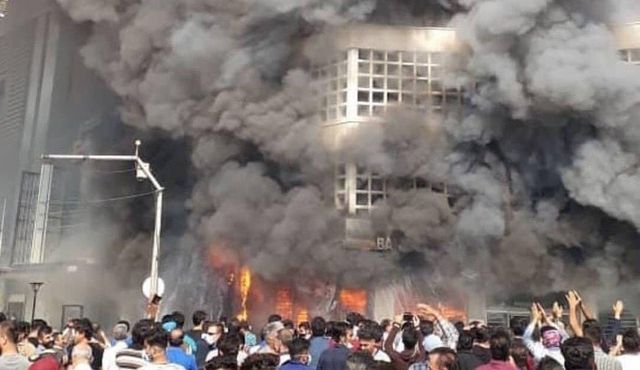
“What is the robbing of a bank
when compared to the founding of a bank?”
Bertolt Brecht
The workers and the poor of Iran were waiting for a sign. That sign came on Friday 15th November. The government decided to cancel subsidies for petrol (gasoline) and raise the price of one litre of petrol 50% for the first monthly 60 litres and 300% thereafter. The whole of Iran rose in revolt. This was the same with what happened in France in the Yellow Vests event (http://redmed.org/article/yellow-vests-la-republique-en-marche-arriere), in the Sudanese revolution (http://redmed.org/article/sudan-revolution), in Ecuador’s “half-day revolution” (https://gercekgazetesi.net/uluslararasi/yarim-gunluk-devrim), even in Chile where the explosion was the result not of a rise in the price of fuel but of a modest rise in metro prices (https://gercekgazetesi.net/uluslararasi/tahrirden-tahrire-dunya-devriminin-ucuncu-dalgasi). The price and fare rises are not the reason for the recent uprisings. The peoples of the world are simply waiting in ambush for the capitalist class to make an erroneous move. That is all. Iran has now joined, once again as we shall see in a moment, the third wave of world revolution (https://gercekgazetesi.net/uluslararasi/tahrirden-tahrire-dunya-devriminin-ucuncu-dalgasi, http://redmed.org/article/tremble-fear-ye-dictators-kings-sheikhs-emirs-0 and earlier http://redmed.org/article/2018-year-resurgence-third-wave-world-revolution). (This is not to say that a revolution has already broken out in all these countries. It just means that whatever the local nature of the uprising, revolution or people’s rebellion, it is still part of the third wave.)
So much rage has burst forth as a result of this simple move by the powers that be. Rising up in small towns first and large cities such as Tehran, Tabriz, Mashad, Shiraz etc. later, the people of Iran have blocked the entire circulation on many avenues and streets, marched up and down the streets and squares of every city, put at least 40 bank branches around the country on fire, as well as storming and arsoning centres of power such as governors' offices, town halls, police stations, religious establishments, the latter being directly a locus of power under the special regime that has ruled Iran for the last forty years. Nothing remains exempt from the fury of the masses, nothing counts as sacred and untouchable in this rampage, nothing falls outside the realm of wrath of the people who have led a wretched life for too long.
The summit of political power also draws the ire of the masses. On the 17th of November, the third day of the hurricane, the “Supreme Leader”, Ayetullah Khamenei handed down the following decision: “Because the expert views on the gasoline situation is varied — some say it is necessary and some say it is detrimental — and since I am not an expert on this I said if the three branches agree, then I will support it.” The answer of the furious crowds was not late in the coming: “Khamenei bînamus” they chanted, “Khamenei the crook” in plain English! And they added: “Death to Khamenei” and “Death to the dictator”. The slogan “No more Islamic Republic” can also be heard often.
This was very clearly a rebellion anticipated by the regime. The statement about the fact that “the three branches agree” in the quote from Khamenei above is a reference to the modality through which the accursed rise in the price of petrol was adopted by the government. It was not the executive power, president Hassan Rouhani, who took the decision, as is normal when it is a question of an economic measure. No, as if preparing for the most solemn occasion, a war or a state of siege for instance, Rouhani brought together the heads of the three branches of government, the legislative (the speaker of the parliament) and the judiciary (the top justice of the country) in order to decide on and declare... a simple rise in the price of a commodity! It is also obvious that it was decided beforehand that Khamenei would support this decision in case the masses responded by pouring on the streets. However, one must pay attention to Khamenei’s formulation. He really does not commit himself to the decision, claiming ignorance on such matters and throwing the ball into the court of the three branches. We are then allowed to speculate that should things seem to be getting out of control, Khamenei will turn around and blame the three powers, thus trying to absolve himself, and may even perhaps have recourse to a different kind of rule that would short-circuit not only the president, but parliament as well.
If we are dwelling on the background to the decision of the government and the very slight likelihood of clerical rule on the part of Khamenei, it is to show that the bourgeoisie of all countries are aware of the actuality of revolution. Let us quote from an intelligent mouthpiece of international finance capital, The Economist, speculating on the future of the main enemy of Iran in the Muslim world, that is Saudi Arabia, when discussing the Saudi oil company Aramco going public: “Investors betting on Aramco as the last oil major stabdng in 30 years’ time will have to consider the risk of revolution or invasion.” (November 2nd 2019, p. 13). If such is the awareness of the rulers, is it not time perhaps that the left and the vanguard of the working class become convinced of the actuality of revolution around the world?
The moment of the inner contradictions of the Iranian bourgeoisie
The Iranian people have been revolting against both economic conditions and the political regime in Iran not for the first time in this century. They have been struggling for freedom from religious despotism and salvation from economic misery for a long time now.
The first revolt in this century took place in 2009, after the presidential elections that brought the conservative Ahmedinejad to power for a second time. The suspicion was very strong that the elections had been heavily rigged against the two other candidates, both of them on the more liberal end of the spectrum of mollah politics. The so-called “Green Movement” lasted for weeks and saw at least 80 protestors die. However, one has to stress very strongly the difference between that episode and the later uprisings. This was a movement that was hegemonised by the upper strata of society, the modern and well-off petty-bourgeoisie, the liberal professions above all, including certain sectors of the bourgeoisie that saw their future in a more liberal Iran, more integrated with Western imperialism. The immediate programme of the movement was also different. It did not include economic demands of the poor, but remained fixed on “democracy” and human rights. It might not be unfair to say that this was Rouhanism avant-la-lettre, that is to say, a yearning for respectable integration with the West so as to make possible the flow of capital and goods into Iran to overcome the stagnation of the economy and higher and more stable profits and good jobs for the strata in question. Yet the Green Movement was, in the end, quashed, with the leaders stigmatised and kept under custody for a long time.
As happens often in history, the failed “revolution” saw some of its programme implemented by the opposite side. Ahmedinejad became, to a certain extent, the executor of the will of the strata that had fanned the flames of the Green Movement. Having risen on a demagogic platform of promises to the poor and destitute of Iran, he turned around and started, in his second term, to implement a neoliberal strategy that served the upper classes and undeniably hurt the poor. Nepotism and corruption reigned. The privatisation drive served parasitic sectors of the bourgeoisie, who converted some of the industrial establishments they bought for almost nothing into commercial enterprises or import business, firing the work force that thereby became redundant. These capitalist strata received immense economic support from the state. At the present time, because these policies have been continued, fittingly, under Rouhani, around 110 capitalist magnates owe the huge sum of 14 billion dollars to banks, state and private. Some of this money has been illicitly funneled abroad and a minority of these magnates have fled the country to enjoy the fruits of their labour under greater conditions of “economic stability”! Some of them have even been prosecuted for these crimes, but they remain at large and the court cases will not be decided any time soon.
This is how one of the authors of this article, Behnaz Tebrizi, described the society born of this kind of development in an article in mid-2018:
“These statistics tell the tale: Iran is the biggest importer of Porsche cars in the Middle East, about four thousand bureaucrat-relatives currently live in UK, an estimated 30 billion dollars were smuggled out of the country in the last three months and one third of the population have income below the hunger threshold. The super rich and the homeless increase in number simultaneously. Most of the time, the state cannot even fund relief efforts after natural disasters and stays completely inactive. People, who have been told to sit tight and struggle through the embargoes to achieve energy independence via the nuclear programme, are now told to start working at 6:30 in the morning against frequent power shortages” (http://redmed.org/article/iran-revolution-meek).
A sizeable sector of Iranian industry and other business lies, on the other hand, in the hands of organic components of the Islamic regime. The so-called Revolutionary Guards, the Pasdaran, own, through enterprises that hardly mask their proprietors, great chunks of the country’s industry and other businesses. The Pasdaran have been transformed into a military ruling class like the Janissaries under the Ottomans, who controlled the different branches of the economy, particularly of Istanbul, and thus had a vested interest in the existing order. On the other hand, the mollahs themselves have used the waqf form (endowments) in Islamic law, ever abused for hypocritically masking private property throughout history even though the raison d’être of this form is philantropy, in order to create capitalist enterprises. Examples of mollahs who are capitalist magnates in the real sense of the word abound. The conflict between the conservatives and liberals of the mollacracy spectrum can be summed up, in the last analysis, as a struggle between these two fractions of the bourgeoisie, the mollahs and the Pasdaran represented by the so-called conservatives, who want an Iran more isolated from the Western world and more radical in their missionary zeal of expanding the influence of the brand of Shiite Islam represented by the Islamic Republic, and the wings of the bourgeoisie who support the more liberal wing of the mollacracy, in particular Rouhani at this moment, defending a worldview that desires a closer economic integration and stronger political cooperation with international, in particular European, finance capital.
Rebellion in the veins
So, the Green Movement of 2009 was really an inner conflict of the bourgeoisie that, like all bourgeois and petty-bourgeois mass movements, partially had to rely on the activity of some of the poorer sections of the people. However, the onset of the Third Great Depression in 2008 coincided with the neoliberal policies that were started by Ahmedinejad and continued and consolidated by Rouhani, even more boldly after the coming into effect of the nuclear deal between Iran and the 5+1 group of countries (the five members of the Security Council plus Germany, plus the unnamed European Union) in 2015 (see our comrade Araz Bağban’s article https://socialistproject.ca/2015/04/b1110/). European capital started to flow into Iran, exploiting every little opportunity that existed in this country of now 83 million souls, wielding one of the greatest reserves of hydrocarbons, both petroleum and natural gas. So even at this stage, where the economy was recovering from the US embargo, the working class, the peasantry, and the poor of Iran suffered from the conditions because the whole game was totally fixed against their interests. This, coupled later in May 2017 with the abrupt exit of the Trump administration from the nuclear deal, the reestablishment of the US embargo in August of the same year and the tightening of the noose subsequently in November, and the withdrawal of European industrial and banking capital and other interests from Iran in fear of retaliation from the US, led to a severe crisis in the Iranian economy, high levels of unemployment, and immense impoverishment of the popular classes.
This is the material basis of the relentless waves of rebellion of the Iranian masses starting from the end of 2017. On 28th December the masses walked out in protest against the high cost of living, corruption and other economic problems (see Araz Bağban’s http://redmed.org/article/rage-poor-iran). The protests started from Khorasan and moved later to Tehran, a pattern that would become even more marked in the current uprising, when small towns in poor areas acted as the vanguard and the main metropolises took over later. The demonstrations of December 2017- January 2018 prefigured both the uprisings in other countries and later the new wave of the Arab revolution in Sudan and Algeria and eventually Iraq and Lebanon (see the statement by our international current http://redmed.org/article/iran-harbinger, which put forward the prediction of Iran being the harbinger, a prediction that turned out to be entirely true) and two years (so far) of unabating struggles of the masses in Iran itself.
February 2018 saw the revolt of Iranian women in Tehran and other cities against forced hedjab. This movement had started before the eruption of the December-January rebellion, when a woman had taken off her head scarf on Enqelab Square. This is why she was known as the “Woman of Enqelab Square” and was later emulated in a host of cities in February.
Then came the explosion of June 2018. This was a moment when the earlier contradiction that surfaced in 2009 within the ranks of the bourgeoisie was articulated to the revolt of the proletariat and the poor masses. Again the demonstrations started in the periphery and reached Tehran gradually. It almost became a law of Iranian revolts that the poorer the region (no matter how small or provincial), the earlier it rose in rebellion. When the protests reached Tehran, even the arch-conservative small traders of the Bazar brought down their shutters! Such has become the plight of many strata of Iranian society. However, this was also an indication of the mood of the conservative sectors of the bourgeoisie and the petty-bourgeoisie, which found themselves in a belligerent mood with the more liberal wing of the ruling class after the failure of the nuclear deal with the West and the rest.
November 2018 saw the workers of the sugar factory Haft-Tappeh struggle against the conditions they had been working under for a time, most importantly the arrears on wage payments. Not only did they wage a strike, but they cut the roads and occupied their factory (https://gercekgazetesi.net/uluslararasi/iranda-seker-iscileri-yolu-gosteriyor). The year 2018 also witnessed the lorry workers’ action and the teachers’ strike. Hence all throughout the period from the critical moment of the people’s rebellion of early 2018, Iranian society has been in ebullition. The present revolt is certainly not a bolt in a blue sky. When the Iranian masses first moved in early 2018, the revolts and revolutions in the Middle East had not yet started. It was only later, first in mid-year 2018 with Jordan and Iraq, and then in 2019 with Lebanon and again Iraq, that the region would become the scene of popular struggles again. This time the Iranian uprising has coincided, not accidentally, with what is happening in the latter two countries. The mollahs were obviously aware of the dangers the times were fraught with. No wonder then they planned for the eruption of the volcano that had been seething for the last two years.
... until there remains one single bank for a workers’ government!
On the basis of its anticipation, the state has, apparently, also decided to kill its way towards “order and stability”. The regime still sticks with its casualty number in the single digit, claiming that a majority of the dead are from among the “security forces”. Despite the internet cut, the 5 per cent internet that remains can be used (in surreptitious manner, obviously) by outside sources as well. The United Nations has said that there are dozens of dead from among the demonstrators. Amnesty International has put forth the rather startlingly precise statistics of 106 dead in 21 cities. And the BBC’s last count was over 200 deaths. Even if we discount a part of the fgures, taking into account the bias of the Western world against Iran, these figures are frightening for a popular movement that has for the moment lasted only for five or six days. (For comparison, we should remember that even the brutal Iraqi regime has killed around 325 demonstrators in the span of more than three weeks.)
For us, counting the casualties is not simply a matter of deploring the dead. It is a sign of the cold-blooded resolution of the regime to quash the uprising and the determination of the people of Iran in fighting for their livelihood and bringing this regime down for they know that it is the force that acts as the guardian for this unjust socio-economic order. We may rest assured that this time the bourgeoisie will close ranks in solidarity since the fall of “the dictator” in such a social uprising will threaten the opening of the floodgates for working class power in alliance with other forces. There are cynics in all countries that attribute the revolt of the Iranian people to the provocation of the fallen Shah’s family or of the US-backed Mojahedin-e Khalq led by Maryam Rajavi. The statement by Michael Pompeo, Trump’s secretary of state, openly supporting the uprising obviously feeds into the cynicism and the scepticism of these circles. The same was said of the Egyptian and Tunisian revolutions of 2011-2013 and all serious studies carried out subsequently have shown that there was no evidence of a link between US plans and the first generation of Arab revolutions. These people forget ane elementary fact: the Iranian people are part of the world army of the starving and destitute that is revolting against capitalism in the period of the Third Great Depression. Should this movement deepen, Pompeo will probably be sorry for having backed it!
The hard evidence is the burning of the banks. The Iranian people, illiterate as some of those taking to the streets may be, have understood better than the venerable gentlemen and more and more also ladies of Anglo-American universities who happen to have become foremost experts of the “dismal science” of economics that capitalist finance is the enemy of the people’s bread in our epoch. The people are arsoning banks because they know that those institutions are the class enemy. The United States can harness these victims of deprivation and starvation only at the great expense of offering them abundant concessions, somewhat impossible in this period of depression for world capitalism, when the workers and the poor of all countries are rising for the same reason.
We have only two humble recommendations to make to the Iranian people who correctly are following their class instincts. One: burn down all the banks until only one single state bank remains that acts as the transitional instrument of resource allocation under a workers’ and peasants’ government in passing over to socialism. Two: build in the heat of the struggle the revolutionary organs of power that will form the basis of that government, as well as a revolutionary workers’ party that can lead the masses in taking power.
The task is formidable, but there exists no solution outside of that path.

